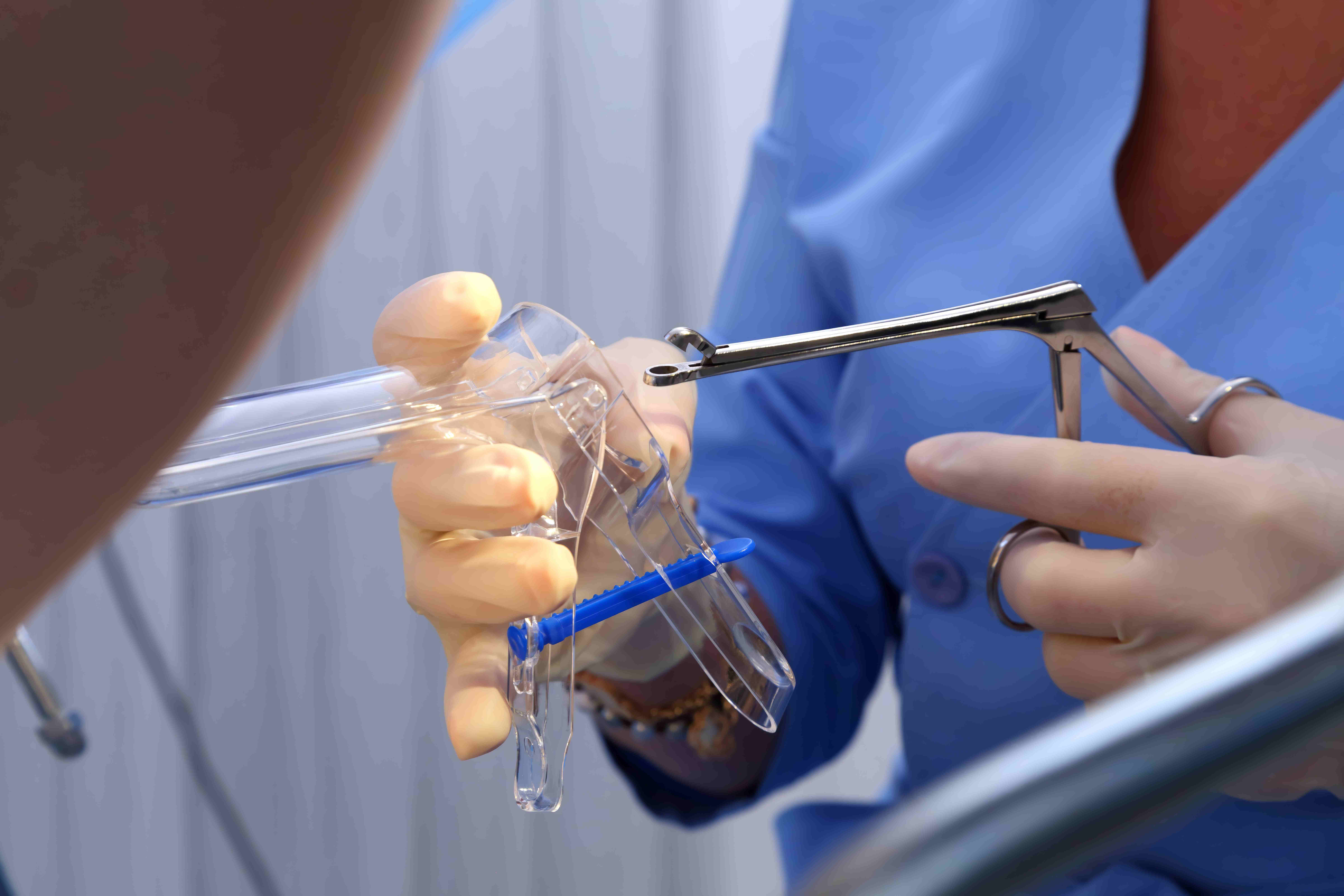Written By: Dr. Samah Ghattas
A senior professional with rich experience in obstetrics and gynaecology, Dr. Samah Ghattas is a member of the Arab Board of Medical Specialization, a member of the Royal College of Obstetrics and Gynaecology, and a member of the World Association of Laparoscopic Surgeons.
Updated On:January 25, 2025
Read more.

What is Cervical Dysplasia?
The cervix or endocervical canal, which is the passage between the uterus and the vagina, develops aberrant cell proliferation in cervical dysplasia, a precancerous disease. Cervical intraepithelial neoplasia (CIN) is another name for it. Cervical dysplasia, which is strongly linked to sexually transmitted human papillomavirus (HPV) infection, is most prevalent in women under the age of 30; however, it can occur at any age.
In the past, the severity of cervical dysplasia was determined by how likely it was that aberrant cells would develop into cancer. According to a more current approach, the amount of aberrant cells in your cervix's epithelial tissue determines how severe the condition is. On a scale from one to three, cervical intraepithelial neoplasia (CIN) is categorized.
Causes of Cervical Dysplasia
If you get HPV, a virus that is transferred through intercourse, you might develop cervical dysplasia. Your immune system will often be able to get rid of the infection. There are more than 100 HPV strains. Certain strains, such as HPV-16 and HPV-18, have a higher propensity to affect your reproductive system and result in cervical dysplasia.
According to scientific estimates, more than 75% of cisgender women who engage in sexual activity at some time in their life have HPV infection. Between the ages of 15 and 25, around 50% of HPV infections take place. The illnesses often vanish without leaving behind any lasting effects. Cervical dysplasia is is a rare ailment that develops over time as aberrant cells proliferate.
Symptoms of Cervical Dysplasia
Typically, cervical dysplasia does not manifest any symptoms. Instead, if abnormal cells are seen during a regular Pap screening, your doctor may determine that you have cervical dysplasia. Some individuals may have irregular vaginal spotting or spotting following sexual activity.
When to see a doctor for Cervical Dysplasia?
Following a cervical dysplasia diagnosis, your doctor will likely keep a careful eye on your health to make sure the cells don't recur or develop into cancer. You could have Pap testing and HPV tests more frequently.
Your doctor could advise having a follow-up Pap test every three to six months for one to two years after therapy. You can then go back to obtaining Pap smears every year.
Cervical Dysplasia Risk Factors
The most significant risk factor for cervical dysplasia, particularly moderate-to-severe cervical dysplasia, is persistent HPV infection.
A higher chance of a long-lasting HPV infection is linked to:
- Beginning sexual activity too soon
- Several sexual partners
- A sexual partner who has had several relationships
- Having sex with a man who isn't circumcised
Cervical Dysplasia Complications
Cervical dysplasia that is mild might resolve on its own. More severe dysplasia may potentially progress to cervical cancer if neglected. For this reason, during gynecological pelvic examinations, clinicians routinely check patients for cervical dysplasia or cancer and provide therapy as necessary.
Cervical Dysplasia Diagnosis
During a normal Pap smear, your healthcare professional will probably detect cervical dysplasia symptoms. The next procedure may be a colposcopy to look at your cervix if the Pap smear is ambiguous or shows suspicious cells.
A colposcopy can be performed in the clinic of your medical professional. Your doctor examines your cervix and vaginal walls using lighted equipment called a colposcope during the operation to search for any abnormal cells.
A biopsy may be performed by your doctor to remove tissue samples that will be tested in a lab. To determine whether a high-risk type of HPV is also present, they could request a DNA test.
Cervical Dysplasia Treatment
The severity of your cervical dysplasia, your age, your health, and your treatment choices all have a role in how you respond to treatment. Future pregnancies may be affected by cervical dysplasia treatment procedures. If you are pregnant or want to get pregnant in the future, talk to your healthcare practitioner about the therapies that are available to you.
-
Monitoring abnormal cells: If you have low-grade cervical dysplasia, often known as CIN 1, there is probably no need for therapy. The problem usually resolves on its own in certain situations. Only 1% of instances eventually lead to cervical cancer. Your doctor may decide to take a cautious approach and recommend routine Pap screenings to check for any changes in abnormal cells.
-
Abnormal cell removal or destruction: If your cervical dysplasia is more severe (CIN 1 or CIN 2), your healthcare professional can remove or destroy the abnormal cells that could develop into cancer. These practices might involve:
-
A tiny, electrically charged wire loop is used during the Loop Electrosurgical Excision Procedure (LEEP) to remove tissue. LEEP can also take tissue samples for additional investigation. Following the operation, 1% to 2% of persons may develop issues including stenosis (narrowing of the cervix) or delayed bleeding.
-
Your healthcare professional removes a cone-shaped piece of tissue containing the abnormal cells by the use of a cold knife cone biopsy (conization). It was originally the treatment of choice for cervical dysplasia, but it is currently only used in more severe instances. Conization can offer a tissue sample for further analysis. Complications including cervical stenosis and postoperative hemorrhage are considerably more likely to occur.
-
Your uterus will be removed during a hysterectomy. If cervical dysplasia persists or doesn't get better after prior operations, a hysterectomy may be a possibility.
-
Cervical Dysplasia Prevention
Avoiding HPV is the only approach to stopping cervical dysplasia. By receiving routine Pap screenings, those who already have an HPV infection can lower their chance of that infection turning into cervical cancer. Regular Pap screenings help identify cervical dysplasia and stop it from developing into cancer even though they cannot prevent cervical dysplasia.
- Get an HPV vaccination
- Practice safer sex
- Have frequent Pap tests
- Avoid using tobacco products
References
Becker, T. M., Wheeler, C. M., McGough, N. S., Parmenter, C. A., Jordan, S. W., Stidley, C. A., ... & Dorin, M. H. (1994). Sexually transmitted diseases and other risk factors for cervical dysplasia among southwestern Hispanic and non-Hispanic white women. Jama, 271(15), 1181-1188.
Bishop, A., Sheris, J., Davis Tsu, V., & Kilbourne-Brook, M. (1996). Cervical dysplasia treatment: key issues for developing countries. Bulletin of the Pan American Health Organization (PAHO); 30 (4), dec. 1996.
Cooper, D. B., & McCathran, C. E. (2022). Cervical dysplasia. In StatPearls [Internet]. StatPearls Publishing.
Mhaske, M., Jawadekar, S. J., & Saundale, S. G. (2011). Study of association of some risk factors & cervical dysplasia/cancer among rural women. National Journal of Community Medicine, 2(02), 209-212.
Moore, K., Cofer, A., Elliot, L., Lanneau, G., Walker, J., & Gold, M. A. (2007). Adolescent cervical dysplasia: histologic evaluation, treatment, and outcomes. American journal of obstetrics and gynecology, 197(2), 141-e1.
Meet our doctors from the Obstetrics & Gynaecology department
|
||||||||
|
||||||||
|
||||||||
|
||||||||
|
||||||||
|
||||||||
|
||||||||
|
||||||||
|
||||||||
|
||||||||
|
||||||||
|
||||||||
|
||||||||
|
||||||||
|
||||||||
|
||||||||
|
||||||||
|
||||||||
|
||||||||
|
||||||||
|
||||||||
|
||||||||
|
||||||||
|
||||||||
|
||||||||
|
||||||||
|
||||||||
|
||||||||
|
||||||||
|
||||||||
|
||||||||
|
||||||||
|
||||||||
|
||||||||
|
||||||||
|
||||||||
|
||||||||
|
||||||||
|
||||||||
|
||||||||
|
||||||||
|
||||||||
|
||||||||
|
||||||||
|
||||||||
|
||||||||
|
||||||||
|
||||||||
|
||||||||
|
||||||||
|
||||||||
|
||||||||
|
||||||||
|
||||||||
|
||||||||
|
||||||||
|
||||||||
|
||||||||
|
||||||||
|
||||||||
|
||||||||
|
||||||||
|
||||||||
Similar Posts
teleMEDCARE App
Download teleMEDCARE app from Google Play or App Store to connect immediately to Medcare doctors at a click of a button and without an appointment.

Home Services
We offer our patients a broad range of home health care services in the comfort of their own homes. Book an appointment for lab tests, vaccinations, nurses and physiotherapists.

Chronic Care
Know more about our Chronic Care Management Programme in partnership with Damana Saicohealth.

teleMEDCARE App mobile
Download teleMEDCARE app from Google Play or App Store to connect immediately to Medcare doctors at a click of a button and without an appointment.

Home Services
We offer our patients a broad range of home health care services in the comfort of their own homes. Book an appointment for lab tests, vaccinations, nurses and physiotherapists.

Spotii
We have partnered with Spotii to offer a more flexible way to pay - Pay over time for your purchase. No interest, no cost & no catch.






































































